This post may contain affiliate links. Read more at our disclosure policy.
Grilled bison isn’t just another steak. It’s lean, bold, and packed with flavor. The key is knowing how to treat it right: keep it tender by avoiding overcooking and nail the perfect grill temperature. This Easy Grilled Bison Steak recipe walks you through both so you can serve a juicy, perfectly grilled bison steak every single time.

We’ve spent years cooking with bison, both at home and through catering events, and one thing is clear: it plays by different rules than beef. Its lean, rich flavor makes it a star on the grill, but it also means you need the right technique to keep it tender and juicy. In this recipe, we’ll walk you through exactly how to do it, so you can grill bison with confidence and impress anyone lucky enough to sit at your table.
Table of Contents
Grilled Bison Steak Ingredients
Keep the flavors simple so you enjoy the natural flavors that bison has to offer. The mineral and earthy flavors of bison are one of the reasons we like it so much. So, we recommend you avoid overpowering the flavor with too many seasonings or marinades.
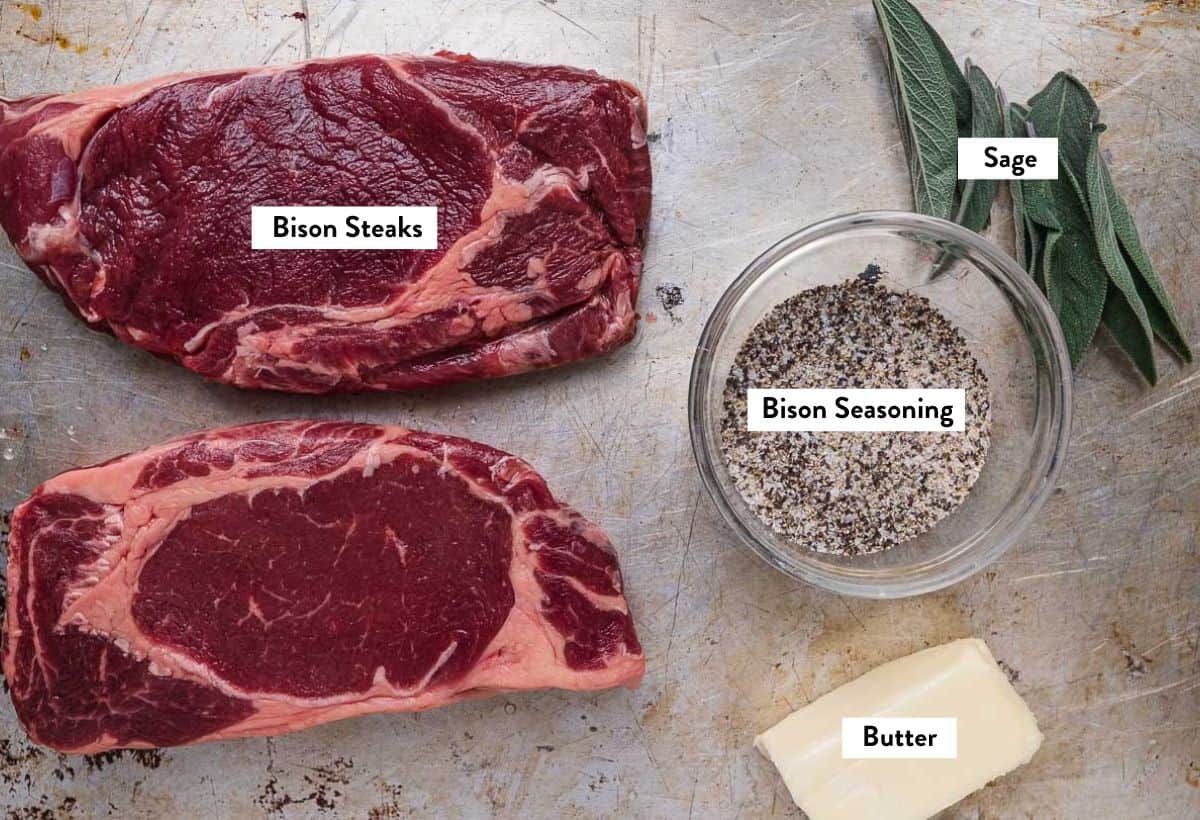
- Good Bison Steaks – You can find bison steaks online, like Honest Bison, or at finer butchers. Bison is typically leaner than beef cattle. You still want to look for marbling in the meat, but you’ll typically see less marbling than beef, since it’s significantly leaner. Ribeye or NY strip are the most common steak cuts you will see. Either works for this recipe.
- Seasoning – When it comes to grilled bison steaks, keep the seasoning simple. We use our SPG Rub, which is equal parts kosher salt, coarse black pepper, and granulated garlic. Or you can use our herbal Beef Seasoning. Just be sure to avoid rubs that contain any sugar (as it can burn at high heat).
- Finishing Flavor – We like to finish grilled bison steaks with additional fat to offset how lean it is. You can use a simple Compound Butter, or you can make a simple brown butter sauce, which we make here.
Preparation – Sage Brown Butter
While you heat up your grill, it’s a great time to make the sage brown butter. Start with a small saucepan over medium heat, and add the butter. Once it melts, add the sage leaves. Allow the butter to come to a light boil, reduce to a simmer, and allow it to reduce for 8 minutes.
As the water boils out, the fat will brown and develop a nutty flavor. Remove from heat after 8 minutes. You can go longer if you want a more intense brown flavor.
Strain the butter into a heat resistant bowl. Separate the sage leaves; they should be crispy. Crumble them up to use as a garnish.
Note: You can also use the stems of the sage as well when browning to help with the infusion of sage flavor.
Prepare Bison Steaks
Bison steaks are already lean and likely do not need to be trimmed. They also tend to be thin steaks, unlike their Tomahawk Steak cousins. Place the steaks on a baking sheet and season liberally on all sides.
If you have time, we recommend dry-brining the steaks the day before cooking, and leaving them in the refrigerator uncovered until your grill is ready.
You do NOT need to let the steaks come to room temperature for an hour. You can add them straight to the grill after seasoning them.
How To Grill Bison Steaks
- Prepare your grill for direct grilling, targeting an internal temperature of 500 degrees Fahrenheit. We use lump charcoal. Before you grill, open the grill top and allow the coals to get red and warm up the grill grate.
- Place the seasoned bison steaks on the grill grates over direct heat. Do not walk away, grill for 3 minutes until a crust develops, and flip. Grill direct another 3 minutes. Remove the steak from the grill when the internal temperature of the steak reaches 120-125 degrees Fahrenheit using a good instant-read thermometer. We prefer the Thermapen One for durability and readings in under 1 second.
- Rest for 10 minutes and then slice against the grain. Plate and pour the brown butter over the top. Garnish with Maldon salt and crushed fried sage from the brown butter.
If using a gas grill, the same applies: get it hot, to 500 degrees and follow the same directions. For more flavor, you use reverse-sear the bison and then finish over high heat, adding smoky flavor. Adjust the smoke time down because lean meat smokes quickly.
Key Tip
You do NOT want to overcook bison. It is not very forgiving and will get tough and gamey if you overcook it. We recommend serving bison rare (120 – 130 degrees) or medium rare (130 – 140 degrees) at the very most. We do not recommend cooking bison any higher than 140 degrees.
Be sure you take into consideration carryover cooking. When you remove the steaks from the grill, they will continue to rise in internal temperature by 5 degrees.
Storage and Leftovers
Leftovers will last for up to three days in the refrigerator.
Grilled bison is great when you warm it back up. When reheating grilled bison, gently warm it back up to avoid overcooking it. In a pan over low heat, add butter or olive oil. Allow the pan to warm up, and then place the bison in the pan. Cover if you can to keep the heat. Flip once after 2 minutes. Serve immediately.
Would you like to save this?
Frequently Asked Questions (FAQ)

Bison are found in North America and Europe, versus the African or Asian Buffalo. The term “Buffalo” in North America was originated by the French, therefore; bison are not Buffalo.
While both come from the cattle family, beef comes from domesticated cattle, whereas bison is a wild game meat native to North America often farmed regeneratively. The biggest difference is in fat and flavor. Bison is naturally leaner with less marbling than beef, which means it cooks faster and can dry out if overdone.
Flavor-wise, bison is rich and slightly sweeter than beef, without the heavy fattiness. Nutritionally, bison tends to be lower in calories and cholesterol but higher in protein and iron, making it a great alternative for a lighter red meat option, according to the National Bison Association.
Best Wine Paring For Grilled Bison
Bison is lean, so we like pairing it with a medium-bodied wine with less tannin. Look for a Pinot Noir, especially from Oregon. If you want to complement the slightly earthy and gamey flavors of Bison, we recommend Cabernet Franc for its rich fruit and sometimes green pepper aromas. It’s a gorgeous pairing!
Best side ideas for grilled bison
BBQ Side Dishes
Restaurant Style Roasted Potatoes
BBQ Side Dishes
Grilled Broccolini with Grilled Lemon and Parmesan
BBQ Side Dishes
Grilled Asparagus with BBQ Hollandaise Sauce
BBQ Side Dishes
Creamy Horseradish Mashed Potatoes
Tried this recipe? Give us a star rating and we would love to see! Mention @vindulge or use the hashtag #vindulge on all the social media handles. And consider subscribing to our newsletter where we drop all our favorite ideas and inspirations weekly.
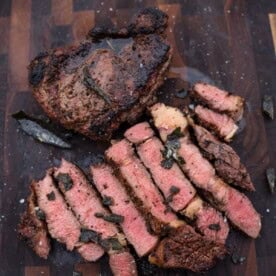
How To Grill Bison Steaks
Equipment
Ingredients
- 4 bison steaks (roughly 8oz each), (Ribeye or NY strip are the more popular steak cuts)
- 3 tablespoons SPG Rub, (You can substitute any seasoning that does not contain sugar.)
- 4 tablespoons unsalted butter
- 8 whole fresh sage leaves
Instructions
For the Bison Steaks
- Preparation: Preheat the grill for direct grilling, targeting 500 degrees Fahrenheit in the cooking chamber. We prefer lump charcoal. Liberally season the bison steaks with your seasoning. See notes on seasoning.
- Grill: Place the bison steaks over direct heat. If using charcoal, be sure they are glowing red and the grill grates are hot. Grill over direct heat for 3 minutes. Flip and then grill another 3 minutes or until the internal temperature of the bison steak reaches 120 – 125 degrees Fahrenheit. Remove immediately, and then let it rest for 10 minutes.
For the Brown Butter Sauce
- Brown Butter: In a small saucepan over medium heat, add butter. Allow it to melt and come to a simmer. Add the sage leaves and allow the butter to simmer for 6 – 8 minutes. The water will cook out, and the butter will brown. Avoid burning by removing the butter when it looks slightly browned. Strain and reserve the sage (it should be crispy). Pour over the finished steaks.
Notes
Nutrition
Nutrition information is automatically calculated, so should only be used as an approximation.
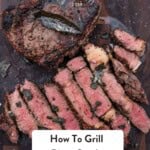
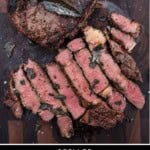
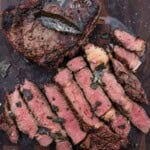

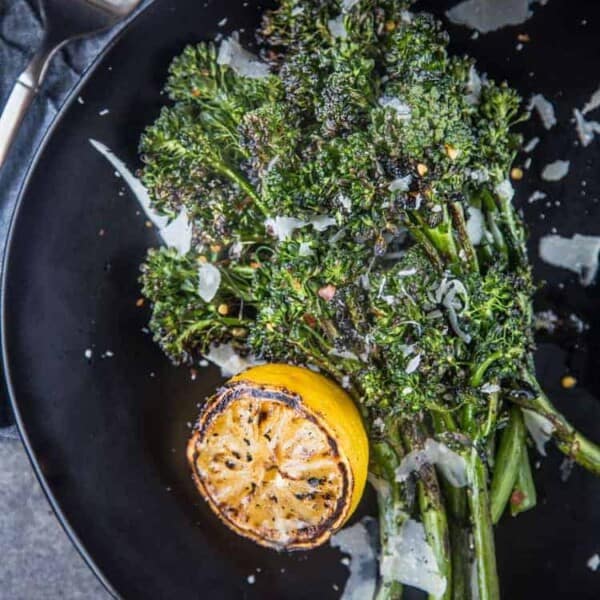
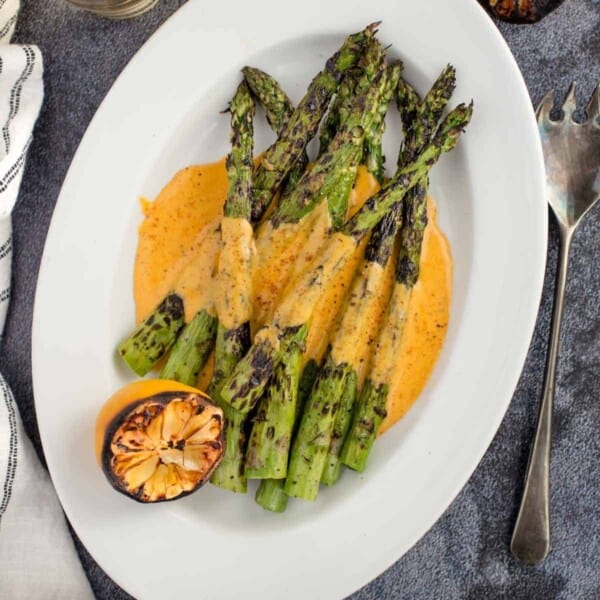
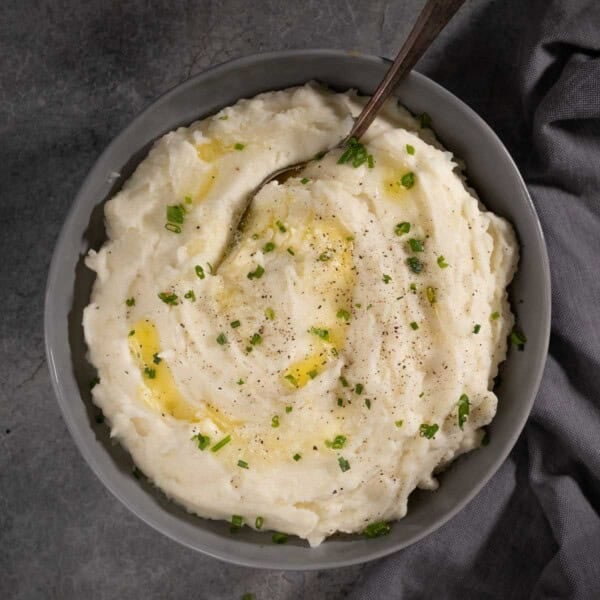


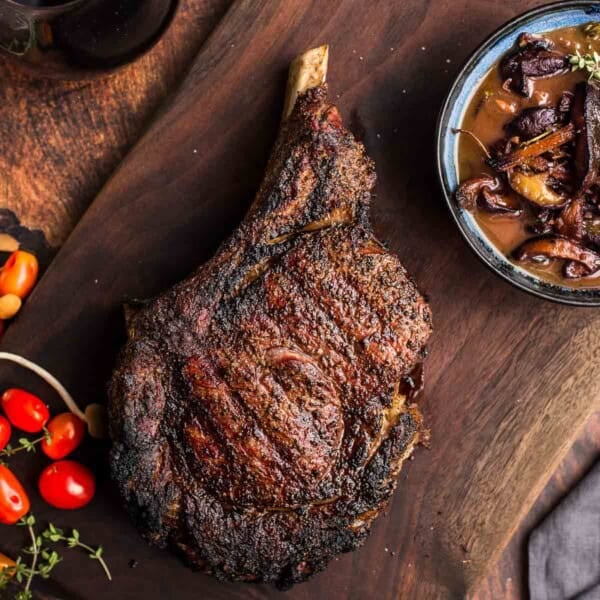
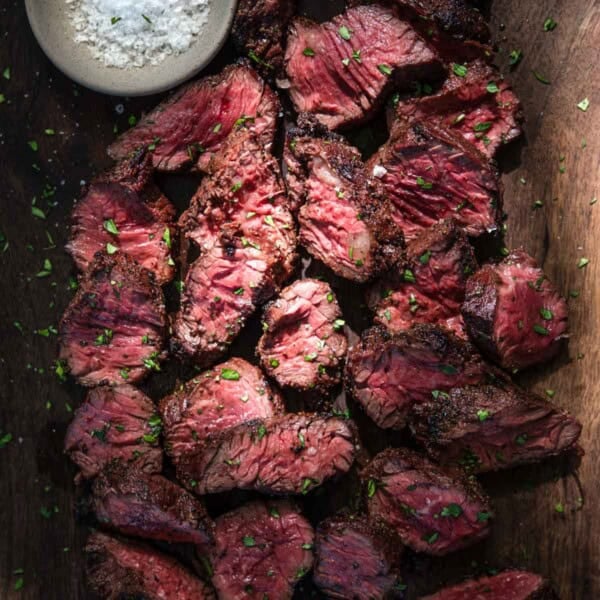
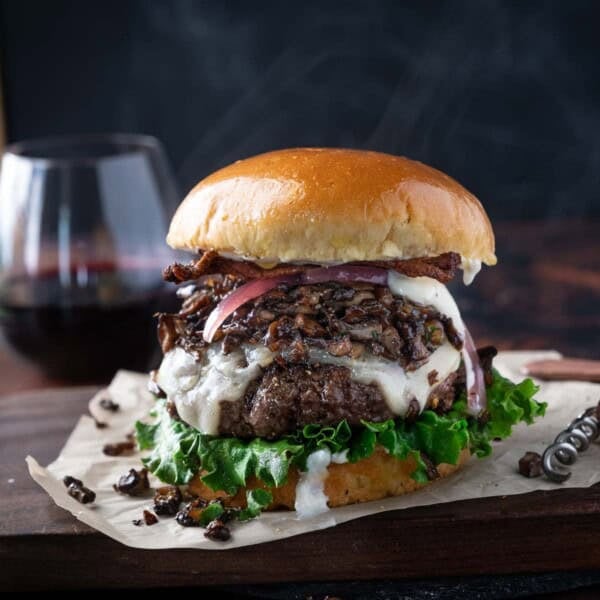
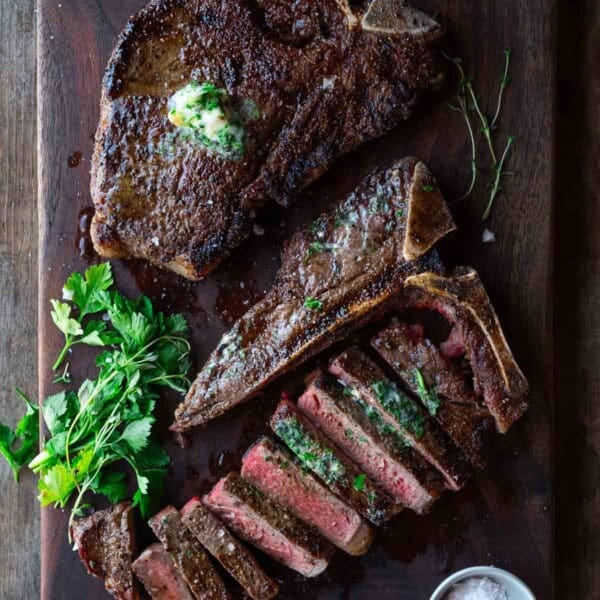

















These bison steaks are amazing with the brown butter. And do not overcook them! Add a compound butter if you don’t feel like making the brown butter sauce.